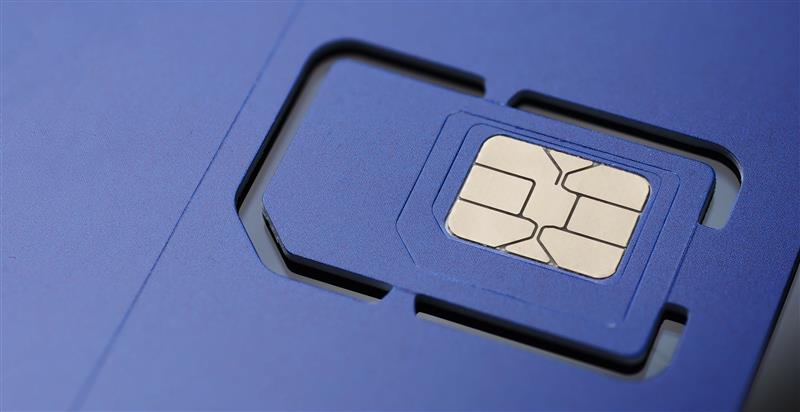The Fifth Generation of cellular networks, known as 5G or 5GS (5G System), is the successor to 4G and the cellular system defined by 3GPP from Release 15, which was fully specified in September 2019.
One of the key deliverables of 5G Standalone (5G SA) is support for Massive Machine-Type Communications (mMTC), otherwise known as Massive IoT (mIoT). Because IoT has only taken off on a global scale in recent years, previous generations of cellular connectivity were never designed to support potentially billions of IoT devices.
True 5G is the only cellular technology designed to support very high traffic densities of devices. Furthermore, support for Massive Internet of Things requirements doesn’t stop at traffic, it also includes the operational aspects required to support a wider range of IoT devices and services anticipated in the 5G timeframe.
What is 5G Standalone (5G SA)?

5G Standalone/Stand Alone, otherwise known as 5G SA, is considered by many in the industry as the definitive version of 5G. It is end-to-end 5G, ‘real 5G’, or 5G as it was intended to be deployed in that it is an all new, 5G-specific network including a 5G RAN and a cloud-native 5G Core (5GC).
5G SA is different to stepping stone implementations of 5G because it does not rely on a 4G core or repurposing of previous generations of infrastructure.
But while 5G SA offers promising capabilities and much anticipated updates, its birth has been somewhat painful, and deployment progress has been slow, primarily due to network operators trying to extract maximum value out of previous technological investments, high deployment costs, and an incomplete ecosystem, including a lack of SA-focused devices capable of attracting consumers.
Along with a dedicated infrastructure deployment, 5G SA also requires MNOs to learn an entirely new architecture, which has proved costly and time consuming, prompting many to reconfigure their 4G networks to support 5G, as a cheaper and more convenient medium-term option. Although migration 5G SA is inevitable, this approach buys operators some breathing room while the ecosystem matures.
To be clear though, while Non-Standalone 5G (5G NSA) serves as a step towards 5G, it isn’t considered ‘true’ 5G because it still relies on a 4G LTE core and is effectively a faster, upgraded version of 4G.
New players or operators without incumbent 4G core networks are unable to follow this strategy and are jumping straight to 5G SA, and it looks very much like the market will need to adopt 5G SA completely if MNOs are ultimately to take advantage of its improvements over previous generations of cellular technology.
What is Non-Standalone 5G?
Although both NSA 5G and 5G SA deliver some fifth-generation capabilities, the big difference is how each mode provides those capabilities.
As we highlighted above, SA is an end-to-end 5G network with a 5G RAN and a 5GC whereas NSA uses a 5G RAN and a 4G LTE core.
Both NSA and SA use the 5GC air interface, which enables delivery of features and capabilities based on the standards defined by the 3GPP, including the provision of a path from 4G LTE to 5G. But it is a stepping-stone technology and NSA 5G cannot deliver the specific capabilities of a pure, dedicated 5G SA network.
NSA 5G doesn’t deliver the same low-latency capabilities of SA, which is one of its key virtues, and it’s also less energy efficient to power 5G networks with 4G infrastructure. In fact, while an Institute of Electrical and Electronics Engineers (IEEE) report revealed that 5GC is more energy-efficient than LTE in an NSA network, using two different forms of cellular technology to provide 4G and 5G capabilities simultaneously significantly increases power consumption in a network.
What is 5GE?
You may also come across the term 5GE or 5G Evolution, a term which is creating some confusion in the market due to the implication that it is either an evolution of 5G or an evolution to 5G. 5GE is essentially a marketing slogan used by some carriers and like NSA, does not indicate ‘real’ 5G capabilities.
Fundamentally, 5GE is an enhanced iteration of 4G LTE-A (LTE Advanced Pro), branded to suggest a closer relationship to 5G.
How does 5G SA compare to NSA 5G and 5GE?
5GE or NSA is an improvement over 4G LTE, but it’s not 5G. The main upgrade to 4G capabilities being enhanced mobile broadband with increased data rates to improve network speeds.
The main benefits of 5GE or NSA are:
- Reduced costs: MNOs can build a stepping-stone to a 5G network on top of their existing 4G infrastructure instead of investing in a new, costly 5G Core.
- Better coverage: Because the network is based on existing infrastructure, it benefits from the existing investments in coverage.
- Ease of deployment: NSA networks make use of existing 4G infrastructure with which MNOs are already familiar, making for a faster and easier deployment.
- Eventual migration: Finally, as the 5G SA ecosystem matures carriers will have the opportunity to replace more and more of their 4G network components with 5G as part of the long-term migration to 5G SA.
What are the benefits of 5G SA?

Compared to 5GE and NSA, 5G Standalone (5G SA) networks include a 5G RAN and a 5GC meaning they can perform essential 5G functions to offer the full advantages of fifth-generation technology.
For consumers, a 5G end-to-end network delivers faster download and upload speeds, better network performance even in population dense areas, better security, and better power efficiency including battery life.
For MNOs, the main benefits of 5G SA include:
- Network slicing: Network slicing lets operators divide a network into multiple different sections that can be optimized for different services creating new commercial opportunities for MNOs using the same physical infrastructure.
- Private 5G networks: The potential for private mobile networks features network infrastructure which is used exclusively by the end user organization. A private network can be owned and managed by the enterprise or deployed as-a-service by a provider.
- Consistent low latency: 5G standalone offers very fast response times and high reliability, allowing for nearly real-time communication without any noticeable delay, the 3GPP Release 15 standard specifies end-to-end latency of less than 10ms.
- Wider coverage: 5G standalone can use multiple 5G frequencies at once to greatly improve upload and download bandwidth over larger areas.
- Enhanced Mobile Broadband (eMBB): Higher data-rates are specified of up to 1Gbps for indoor (5G LAN), with around half of this value available for the uplink.
- Massive Machine-Type Communications (mMTC): Several scenarios require 5G to support very high traffic densities of IoT devices often sending small amounts of data. mMTC and mIoT requirements also include the operational aspects that apply to the wider range of IoT devices, applications and services anticipated.
What are the key challenges to delivering 5G?
Despite the promise of 5G making sophisticated and large-scale IoT initiatives universally viable, one of the key challenges is going to be delivery of 5G IoT services off-network. Specifically, challenges delivering many of the promised benefits over roaming.
5G’s advanced features require significant upgrades to existing roaming hubs and infrastructure, which won’t always be available on roaming partner networks. Furthermore, MNOs need to manage both 4G and 5G networks simultaneously, ensuring seamless handovers between them and increasing technical complexity.
- Higher data throughput use cases will require local termination of data
- Advanced services can only be delivered on-network, not on the roaming carrier’s network
- For many use cases the data will have to be presented back in a single integrated instance, and this is very challenging to do over roaming
Federated localization is going to be needed to get the maximum benefits of cross-border 5G IoT initiatives and this is going to require the development of a new trading model to supplement roaming. It’s expected that mobile operators will increasingly look to profile-sharing arrangements with each other to deliver global solutions.
What impact will 5G SA have on the IoT market?

Massive Internet of Things (mIoT), also known as Massive Machine Type Communications (mMTC) in 5G terminology, is a key proposition of the specification. It is intended to fully realize the opportunities of IoT on a large scale, connecting potentially billions of devices.
5G is crucial for supporting mIoT due to its ability to handle a significantly higher density of devices and their resultant traffic compared to 4G.
These devices typically have long battery life and 5G increases the possibility for higher throughput speeds, expanding the potential use cases.
Key aspects of mMTC enabled by 5G:
- High device density: 5G can support a much larger number of devices per square kilometer than 4G, overcoming a significant hurdle and enabling the widespread deployment of mMTC devices.
- Low latency: mMTC devices often require low data rates for applications like smart metering, environmental monitoring, and logistics. But low latency also means improved real-time applications for use cases like payments and connected vehicles.
- Long battery life: mMTC devices are typically designed for long battery life, often operating for years without requiring a recharge. 5G helps with improved power demands on the device.
- Security: mIoT technologies are inherently more secure than previous solutions. This is because the networks use dedicated spectrum bands to avoid interference and because modern SIMs and eSIMs contain highly secure integrated circuits.
- 5G as the enabling technology and core: 5G provides the necessary infrastructure and capabilities to support the massive scale and diverse requirements of mMTC devices and makes previously impossible applications possible.
For enterprises and MNOs eager to capitalize on the full benefits that can be unlocked for IoT initiatives, 5G SA is a key technological milestone. While IoT applications and use cases have matured at a dizzying rate and new opportunities have emerged, technological speed bumps have been many.
5G SA is the future enabler of massive IoT deployments. It has the potential to provide high-speed, low-latency connectivity for billions of devices worldwide, significantly reducing response time and increasing the efficiency of low-powered constrained devices.
Eseye brings decades of end-to-end expertise to integrate and optimise IoT connectivity delivering near 100% uptime. From idea to implementation and beyond, we deliver lasting value from IoT. Nobody does IoT better.

